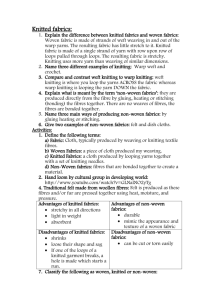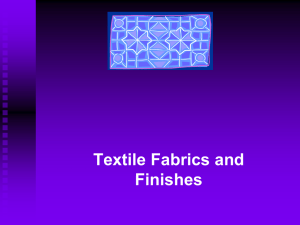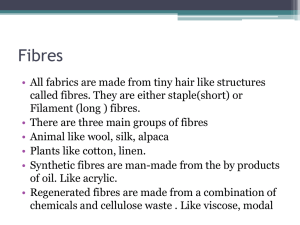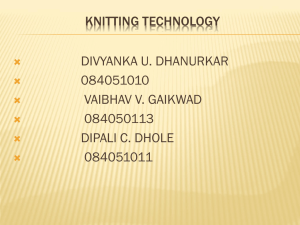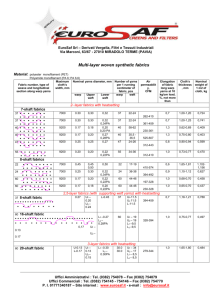Material World, fabric- characteristics and properties
advertisement
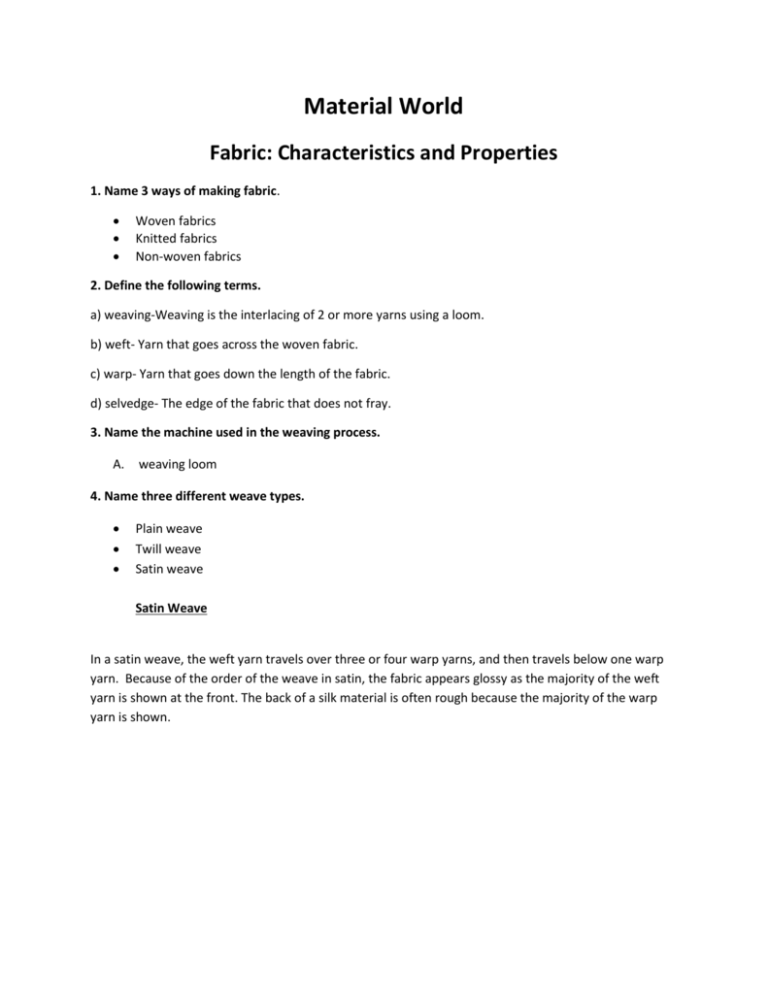
Material World Fabric: Characteristics and Properties 1. Name 3 ways of making fabric. Woven fabrics Knitted fabrics Non-woven fabrics 2. Define the following terms. a) weaving-Weaving is the interlacing of 2 or more yarns using a loom. b) weft- Yarn that goes across the woven fabric. c) warp- Yarn that goes down the length of the fabric. d) selvedge- The edge of the fabric that does not fray. 3. Name the machine used in the weaving process. A. weaving loom 4. Name three different weave types. Plain weave Twill weave Satin weave Satin Weave In a satin weave, the weft yarn travels over three or four warp yarns, and then travels below one warp yarn. Because of the order of the weave in satin, the fabric appears glossy as the majority of the weft yarn is shown at the front. The back of a silk material is often rough because the majority of the warp yarn is shown. Knitted and Non-Woven Fabrics 1. The difference between knitted fabrics and woven fabrics is that when weaving yarn interlacing is involved however when knitting looping is involved. The styles of making fabrics are completed by using different methods; therefore each style has a different final product. 2. Three examples of knitted fabrics are: raschel Milanese Tricot 3. Although weft knitting and warp knitting are both created by looping yarns the way each process is carried out and the direction the yarn travels in, is different. Weft knitting travels horizontally, however warp knitting travels vertically. Also, only a pair of needles is used to make weft knitting. In contrast when warp knitting more than one needle must be used at the same time. Another difference is that weft knitting can be done by both machine and hand; however warp kitting can only be done by machine. 1. In the process of making non-woven fabrics threading, looping and weaving are not needed. Non-woven fabrics are made of fibres that are randomly placed beside each other and are joined together by either by heat, glue or stitching. 2. Three ways of making non-woven fabric is by gluing, heating or stitching the fibres together. 3. Two examples of non-woven fabrics are wadding and felt. Fibres 1. Define the following terms: a) Fibres- the raw materials for textile items; hair-like strands from different sources that are spun together to make yarn. b) Fibre properties- Properties are unique characteristics that a type of fibre has and this can affect its ability to carry out a certain action or method. A fabric’s properties can also affect why it is suitable for a certain purpose. c) Fibre blends- Two or more types of fibres mixed together to create a new fibre with unique characteristics and properties. 2. Classify the following fibres under the headings of ‘natural’ or ‘synthetic’. a) b) c) d) e) f) g) h) i) j) Wool- natural Silk- natural Polyester- synthetic Rayon- synthetic Acrylic- synthetic Nylon- synthetic Lycra- synthetic Acetate- synthetic Cotton- natural Linen- natural

